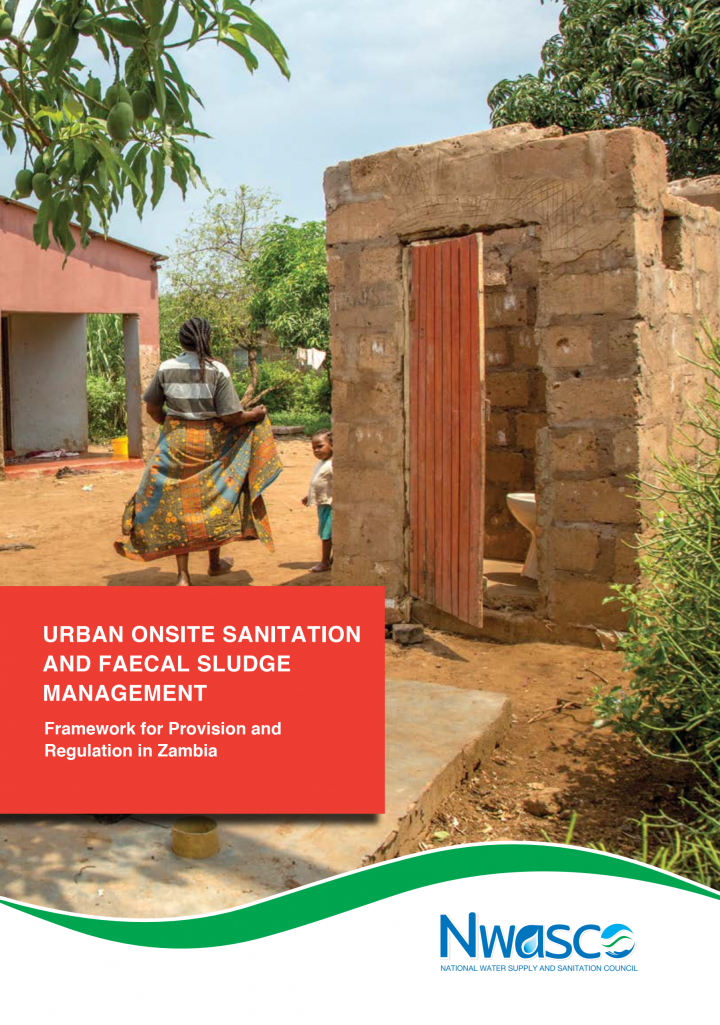Urban Onsite Sanitation and Faecal Sludge Management Framework for Provision and Regulation in Zambia National Water Supply and Sanitation Council (NWASC) (2018)
After decades promoting sanitation in low and middle-income countries, several countries and the global sanitation community have come to realise that it is time to rethink the approach to accelerating access to quality services. Since 2000, the WHO/UNICEF Joint Monitoring Programme of the Millennium Development Goals (MDGs) has consistently reported that the share of the population in low and middle-income countries that use pit latrines, septic tanks and systems termed as ‘unimproved’ sanitation facilities is growing.
It is now estimated that between 2.1 and 2.6 billion people in low and middle-income countries rely on onsite technologies that produce tons of untreated faecal sludge (FS) every day. When septic tanks and pit latrines become full, the sludge that is collected from them is largely discharged untreated into open drains, irrigation fields, open lands or surface waters. The amount of untreated FS discharged into the open environment poses a serious public health risk. A 5m3 truckload of FS dumped into the environment is the equivalent of 5,000 people practising open defecation. Adding to this is the heavy load from raw faeces excreted in the open by an additional 1.1 billion people who still do not have access to any toilet.
Bibliographic information
National Water Supply and Sanitation Council (NWASC) (2018). Urban Onsite Sanitation and Faecal Sludge Management Framework for Provision and Regulation in Zambia National Water Supply and Sanitation Council (NWASC)
Filter / Tags
Guidelines and manualsEnglishImport to Sanitation Workers Platform
Downloads

Published in: 2018
Pages: 104
Publisher:
National Water Supply and Sanitation Council (NWASC)
Author(s):
National Water Supply and Sanitation Council (NWASC)
Uploaded by:
GIZ
Deutsche Gesellschaft für Internationale Zusammenarbeit (GIZ) GmbH
